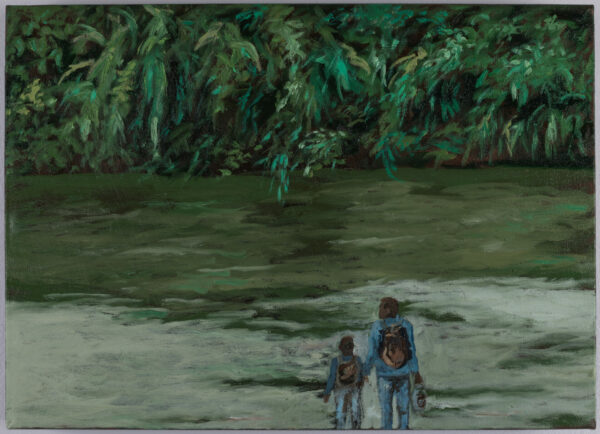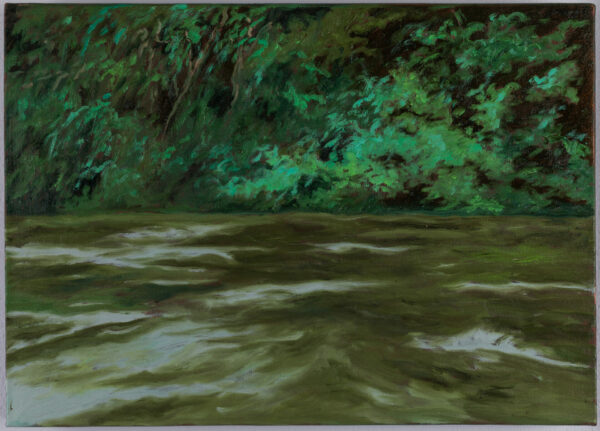




ARCO 2024
The series presented on this occasion, titled Darién (2024), charcoal and embroidery on canvas, and painting, focuses on the tensions and relationships that arise from the connections between the landscape and the massive migratory processes of fauna and how they reproduce in humans.
Many factors encourage species mobilization processes in nature. Historically, due to these movements, cultural, social, and biological embryos have been generated, allowing humanity to adapt, survive, and evolve. However, the current reality is different. Among humans, migrations obey, in many cases, the critical economic and political conditions in the territories occupied by the communities that are displaced. For animals and plants, the violence with which common goods are exploited has triggered the imbalance manifested in deforestation, altered ecosystems, and an evident climatic and food crisis. By erroneously assuming common goods are the so-called natural resources, the door is opened to international and local powers for their exploitation. Water, minerals, hydrocarbons, the ocean, and even the air, just to name a few, are tyrannically abusedin the processes of false development.
For Pérez, who originally comes from Catatumbo, a jungle area on the border between Venezuela and Colombia, the issue of migration is a constant in her work. The last years of her practice have been dedicated, among other things, to exploring the phenomena in which plant beings (Notes for Burning Forest, 2022 and The Forest Bed, 2021), animals (from the series ‘’The Burning Forest’’, 2022), and humans are forced to mobilize to survive (Panorama Catatumbo, 2012-2016, Expelled from Paradise,
2019 and No Man’s Land, 2023)
The Darien is a humid jungle with bioclimatic characteristics similar to Catatumbo, in which its dense ecosystem has separated two portions of the American continent. The great Pan-American highway, for example, was reduced to designs and calculations, as in its planning, it became evident that the jungle would not allow its construction and operation in the stretch known as the Darien bottleneck: the wettest place inhabited by insects on the planet. However, urgency has built another type of highway, one formed by paths of human bodies. Women, children, and men from all planetary peripheries have thrown themselves into the tropical abyss, longing to reach the border of Mexico and the United States to seek refuge in the “land of hope”
The archive of images circulating in the media functions once again in Pérez’s work as a trigger to consider nature as a witness, refuge, and, simultaneously, antagonist of a desperate journey. Once again, in Perez’s narratives, human beings, plant beings, and animals find themselves in a fable that the artist proposes as a solution to the calculated and colonial Romanization of territories and tropical landscapes.
IFEMA MADRID / Avenida del Partenón, 5 / Madrid, Spain










